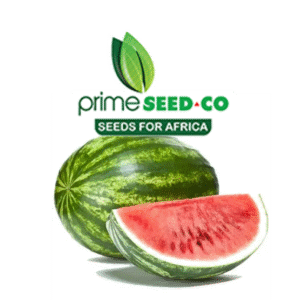Description
Overview: Tengeru 97 (open‐pollinated, developed by HORTI‐Tengeru / AVRDC) Registration & Origins Registered in 1997 by HORTI‑Tengeru in Tanzania, developed in conjunction with AVRDC (World Vegetable Center). Released alongside ‘Tanya’ as improved disease‑resistant processing/fresh market lines. Adaptation Best suited for altitudes of 400–1,500 m. Commonly grown in Arusha, Manyara, Kilimanjaro, Morogoro, Tanga regions of Tanzania, and in neighboring countries including Zambia. Key Features Growth Habit: Determinate (bush-type) with vigorous growth and broad leaves; plant height ~95–100 cm. Phenology: Days to 50% flowering: ~31 days after transplanting Days to 50% fruiting: ~47 days after transplanting. Full maturity: ~75–100 days depending on source and local conditions. Fruits: Medium-sized round to oblate fruits, ~100–130 g each Bright red, firm flesh with good shelf life (up to ~2 weeks at ambient temperature). Disease Resistance & Stress Tolerance Resistant to root-knot nematodes, Tomato Mosaic Virus (ToMV) and Fusarium wilt. Tolerant to Tomato Yellow Leaf Curl Virus (TYLCV); shows mild symptoms and low disease incidence in trials. Additionally noted for resistance to bacterial wilt, particularly useful during rainy seasons when this disease is prevalent. Yield & Agronomic Performance Expected yields: Around 60–80 t/ha (~20–30 t/acre) in well‑managed systems. When grown optimally in eastern Africa, yields of 80–100 t/ha have been reported. In Tanzanian smallholder‑based processing systems, Tengeru 97 gave roughly 36% higher yields than older cultivars and reduced input costs by ~17%. Summary Table Feature Details Type OPV tomato, determinate Maturity ~75–100 days Fruit Size & Shape 100–130 g, round to oblate Fruit Texture & Storage Very firm, lasts up to ~2 weeks shelf Yield Potential 60–80 t/ha (max up to ~100 t/ha) Disease Resistance ToMV, Fusarium wilt, root‑knot nematode; tolerant to TYLCV; resistant to bacterial wilt Ideal Regions 400–1,500 m altitude; East & Southern Africa agro‑zones 🌍 Applicability for Zambia Tengeru 97’s adaptability to similar agro‑ecologies in regions like Tanzania and Kenya suggests strong performance in parts of Zambia, especially where mid‑elevation climates prevail. Its disease resistance profile makes it well suited for rainy season tomato production, reducing losses from wilt, viral diseases, and pests. The medium-sized firm fruits are suitable for both fresh markets and small-scale processing. ⚠ Considerations As a determinate, bush-type variety, it will produce for a compact harvest window (~4–5 weeks). Requires staking or support due to vigorous leafy growth, particularly under good fertility regimes. OPV means seed can be saved between seasons, but uniformity may decline over generations. Recommendations If purchasing through Seed Co Zambia or Prime Seed Co, confirm local supplier information and ask for any trial or distributor data. Conduct on‑farm demonstration plots to assess yield and disease response in your specific zone. Follow recommended spacing (e.g., ~60 cm × 45 cm), transplant timing, and nutrient input for optimal results. Consider staking systems and regular monitoring during fruit set to manage plant structure and maximize yields

 Cart is empty
Cart is empty 




Reviews
There are no reviews yet.